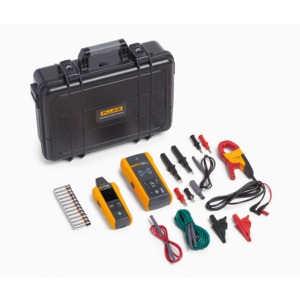
- Description
- Attributes
- Documents
Highlights:
- Locate energized and de-energized wires quickly and accurately in walls, ceilings, and floors
- Find breaks or opens and shorts, and identify breaks and fuses easily
- CAT IV 600 V safety rated
- Includes the i400 AC Current Clamp accessory for inducing a tracing signal on the cable when there is no access to bare conductors
- LCD Display
- -20 C to 50 C (-4 F to 122 F) Operating Temperature
- 1 year Warranty
Includes: Receiver, Transmitter, Current Clamp, Test Lead Accessories, Batteries and Hard Carrying Case
The Fluke 2052 Advanced Wire Tracer accurately and safely troubleshoots energized and de-energized wires in residential, commercial, and industrial environments up to CAT IV 600 V, offering the highest protection available. It's designed to protect you from the most dangerous levels of transient overvoltage, spikes up to 8,000 V, that can occur in industrial and utility environments.
Wire Tracing Customized for Your Application
Fluke's 2052 with different modes and functions gives you the flexibility to troubleshoot a wide range of electrical wiring and circuitry problems you may encounter on the job.
Four Receiver Tracing Modes
- Quick Scan
- Precision
- Breaker
- Non-contact voltage detection
The 2052-R Receiver detects the signal in wires and cables using two methods: passive tracing without the transmitter for non-contact voltage detection and active tracing with the transmitter for all other modes. The receiver’s tip sensor can trace wires in corners, tight spaces, and junction boxes.
Three Transmitter Power Modes
The 2000-T Transmitter works on energized and de-energized circuits up to CAT IV 600 V and features high, low, and loop modes. These modes change the strength of the induced signal and can help provide more accurate results, depending on the circuit you’re tracing.
Two Transmitter Output Frequencies
The 2000-T automatically senses whether the system is energized or de-energized and selects a 6 kHz or 33 kHz output frequency.
Eight Receiver Sensitivity Levels
More sensitivity levels mean more flexibility and accuracy when tracing.
